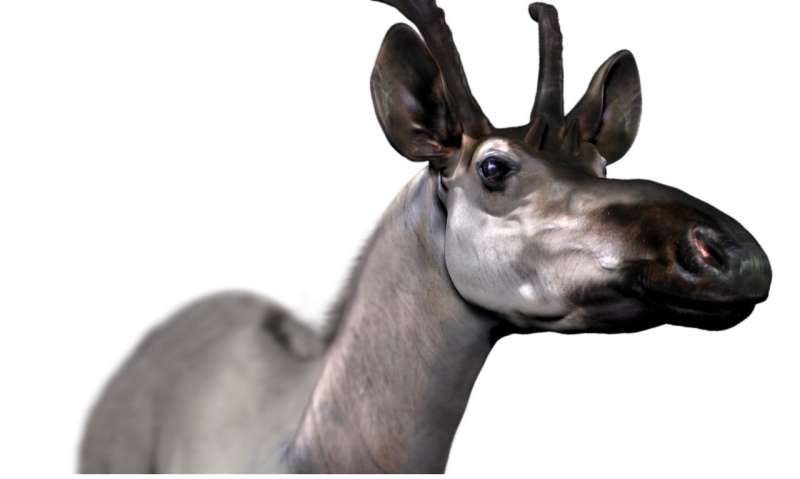Newly described giraffid species may help trace evolution of giraffe ancestors

A new giraffid species from Spain may extend the range and timespan of the ancestors of giraffes, according to a study published November 1, 2017 in the open access journal PLOS ONE by María Ríos from the National Museum of Natural History, Spain, and colleagues.
The giraffids, a family of ruminants that includes modern day giraffes and okapis, are thought to have existed as far back as the early Miocene epoch. While fossils from over 30 extinct species have been described, the lack of fossilised skulls has been a barrier to determining evolutionary relationships.
The authors of the present study describe a new large giraffid species, named Decennatherium rex sp. nov., from the Spanish province of Madrid. The fossilized skeleton is thought to date from the late Miocene and is unusually complete, providing the researchers with new anatomical and phylogenetic data.
The authors conducted a phylogenetic analysis to help elucidate evolutionary patterns. The results suggest that the Decennatherium genus may have been the most basal branch of a clade of now-extinct giraffids containing both sivatheres, the largest known giraffids, and samotheres, whose appearance was somewhere in between that of okapis and giraffes. All giraffids in this group feature four horn-like skull protuberances known as ossicones, two over the eyes and two larger ridged ossicones at the back of its head. The authors state that Decennatherium was likely the earliest-evolving example of this ossicone layout.
The inclusion of Decennatherium in the sivathere-samothere clade would extend its timespan back to the early late Miocene and its range as far as the Iberian peninsula, making the clade one of the most successful and long-lived of all the giraffids.
As Ríos summarizes: "New four horned extinct giraffid Decennatherium rex from Cerro de los Batallones (9my, Madrid) sheds light on the evolution of the giraffid family and the extinct giant Sivatherium."
More information: Ríos M, Sánchez IM, Morales J (2017) A new giraffid (Mammalia, Ruminantia, Pecora) from the late Miocene of Spain, and the evolution of the sivathere-samothere lineage. PLoS ONE 12(11): e0185378. doi.org/10.1371/journal.pone.0185378
Journal information: PLoS ONE
Provided by Public Library of Science




















